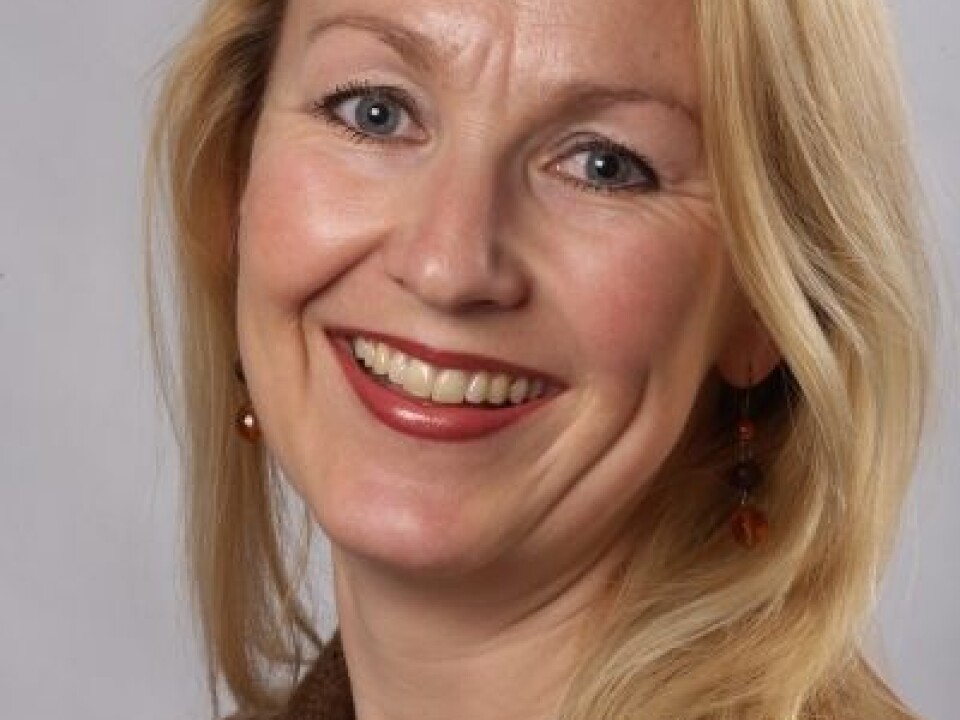
Large differences in ADHD treatment
Attitudes about Attention Deficit-Hyperactivity Disorder (ADHD) and how to treat it vary enormously from country to country. Dissimilarities in the use of medicines and psychosocial countermeasures are also evident.
Denne artikkelen er over ti år gammel og kan inneholde utdatert informasjon.
The occurrence of ADHD varies in different countries, mainly due to diverse diagnostic practices.
“Countries lack definite national figures regarding incidences of ADHD. This includes Norway, so we cannot provide the exact percentage of the population that are afflicted.”
So says Heidi Aase, who is project manager of the ADHD Study at the Norwegian Institute of Public Health, and one of the researchers involved in a new study that looks at international variations in ADHD treatment.

“Charting and quantifying the prevalence of ADHD gives different results depending on the methods used. In general it occurs in three to five percent of the population, independent of cultures,” she says.
Increase
Despite such variations some clear tendencies have been found.
“Generally we see an estimated rise in the occurrence of ADHD. The number of children who are treated pharmaceutically has increased,” says Aase.
Treatment with medications is easier to keep track of and target in research than psychosocial treatment because we have a national registry of their use. Other measures vary and are not registered as systematically.
For instance a study has been published about differences among the Nordic countries as regards use of medicines to treat ADHD.
“There’s a rather wide variation here. Iceland ranks much higher than the other Nordic countries,” says Aase.
In 2007 about 12 out of every 1,000 persons in Iceland were given ADHD medicines. This is a rate of medicinal use equivalent to that reported for the USA.
In Finland only 1 out of 1,000 received ADHD medicines.
Norway had close 5 per 1,000, Sweden close to 3 per 1,000 and Denmark just over 2 per 1,000.
Treatment varies the most
There is no exact correlation the number of patients who are medicated and the number who are diagnosed.
“The share of those with the diagnosis who are medicated differs. In some countries 70-80 percent of those with an ADHD diagnosis are given medicines, in others only 20-30 percent,” says Aase.
The share that receives treatment and treatment procedures comprises the biggest difference among the countries.
The new study looks at the ADHD practices in Australia, Brazil, Canada, China, USA, Germany, Israel, Netherlands, Great Britain and Norway.
The study shows that the dominant approaches to ADHD and treatments pivot on economic, historical and political issues in addition to cultural values.
Medications frowned on in Brazil
“In Brazil the dominant approach is psychoanalytical and Brazilians tend to disregard biological mechanisms,” says Aase.
Until recently medication of ADHD has been held in disfavour because of the country’s history of military dictatorship and links between political oppression and medication of people with behavioural problems.
Thus the share of ADHD cases that are treated pharmaceutically in Brazil is very low. In the USA and several other countries half of all ADHD cases are treated with medicines.
“We have variations within Norway too and we’re planning a new study of that. A study by Sintef Helse in 2004 revealed a wide variation among Norwegian counties that utilized ADHD medicine,” says Aase.
“This surely also applies to their relative shares of the population that are diagnosed,” she adds.
Aase thinks this can link to access to profession personnel, professional disagreement and how updated the health workers are.
Optimal treatment?
According to a press release from the Norwegian Institute of Public Health there is still a way to go before an “optimal” treatment of ADHD is found.
Who knows what the optimal treatment is?
“Optimal treatment will always be something that is adapted to the individual and helps each individual patient cope with the condition without it hampering his or her quality of life. What this means will differ from person to person. The challenge for health care is to find the right treatment for each,” says Aase.
“But in the countries with low rates of treatment it’s assumed that many who suffer from the malady get no treatment.”
“It used to be like that in Norway too. The rise in treatment in the last 10 years is partly due to increased awareness, so more people who really need treatment are getting it,” she says.
Yet diagnosing ADHD could be a fad?
“People who are critical are generally not in good touch with pertinent research. They might have experience with a case of ADHD, but haven’t studied it systematically.”
“And there are also strong forces among scientologists who actively combat medicinal treatment of ADHD.”
Biological foundation
What have they overlooked in research literature?
“We have neurobiological research that clearly shows differences among persons with the diagnosis. We know there is high percentage of hereditary connections. We know that specific genes are involved.”
“So there is distinctly a biological foundation for the diagnosis.”
Does a clear biological foundation necessarily mean that medication is the answer?
“No, but medicines represent a solution that is well documented. It works for 70-80 percent of the patients and reduces symptoms.”
“That said, internationally it’s understood that medication isn’t enough on its own. In Europe we recommend starting with psychosocial measures, accommodations and parental guidance before starting initiating medications.”
“The problems are so extensive for some children that psychosocial initiatives don’t work. These kids have serious problems concentrating and need medicine to get hold of themselves sufficiently to have any success with other measures,” says Aase.
Broad spectrum
In countries where medication of ADHD sufferers is common, the use of expensive long-lasting medicines is becoming widespread.
“The study also shows that countries with public health systems offer a wide array of evidence-based interventions,” writes the Norwegian Institute of Public Health.
“Research that takes cultural factors into account is needed to bolster understanding of the international variations,” the institute writes in a press release.
“This means that symptoms are examined and registered within the child’s cultural context and we cannot transcribe criteria directly from one culture to another,” says Aase.
References:
Stephen P. Hinshaw, Richard M. Scheffler, Brent D. Fulton, Heidi Aase, Tobias Banaschewski, Wenhong Cheng, Paulo Mattos, Arne Holte, Florence Levy, Avi Sadeh, Joseph A. Sergeant, Eric Taylor, and Margaret D. Weiss; International Variation in Treatment Procedures for ADHD: Social Context and Recent Trends. Psychiatr Serv, May 2011; 62: 459 - 464.
Zoëga H, Furu K, Halldórsson M, Thomsen PH, Sourander A, Martikainen JE.; Use of ADHD drugs in the Nordic countries: a population-based comparison study; Acta Psychiatr Scand 2011: 123: 360–367; DOI: 10.1111/j.1600-0447.2010.01607.x.
------------------------------------
Read this article in Norwegian at forskning.no
Translated by: Glenn Ostling

































